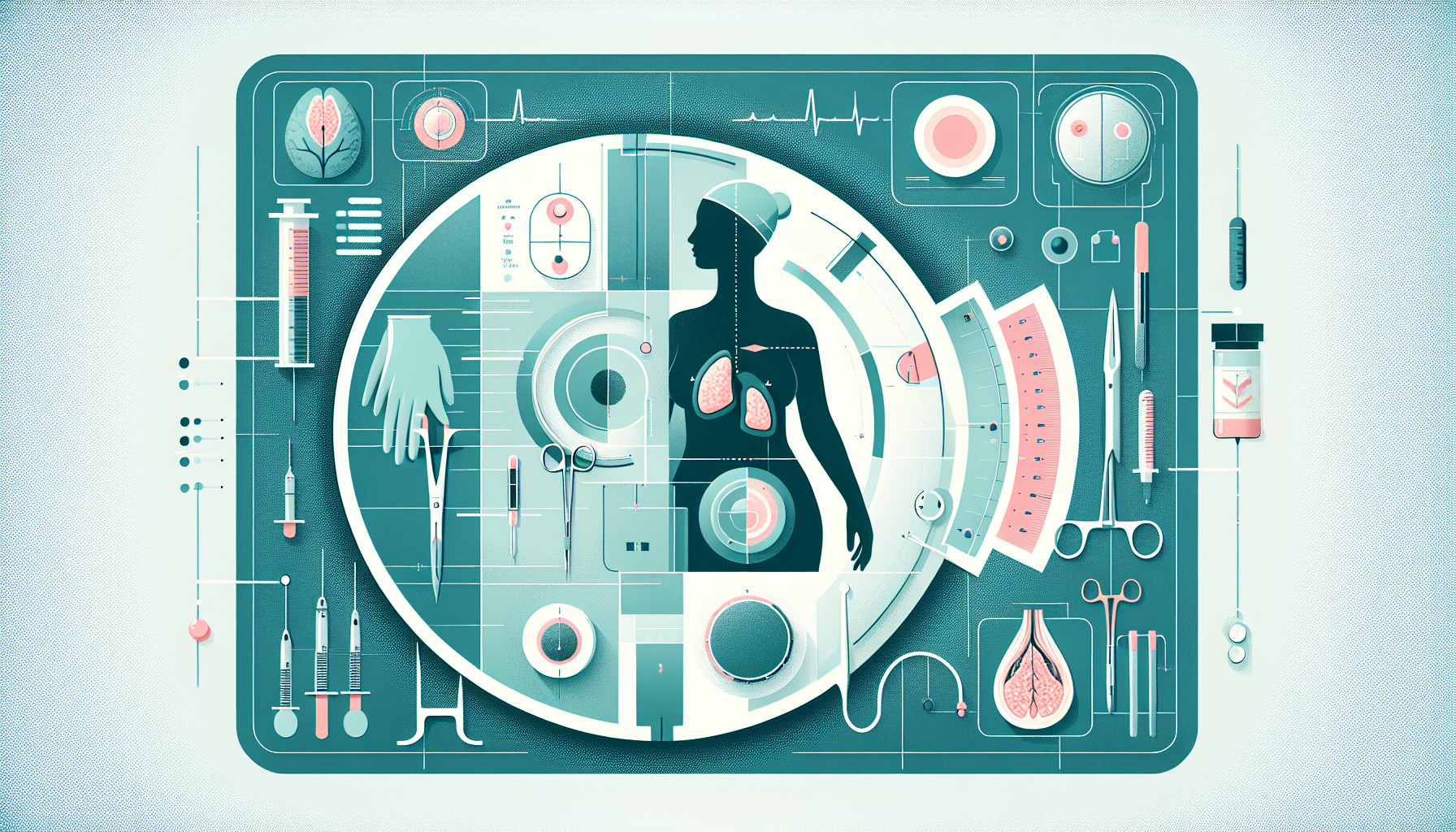Our Summary
This research paper is about a study that aimed to find out if the type of surgery a woman with breast cancer undergoes affects her likelihood of experiencing depression more than a year after the operation. The researchers looked at existing studies that compared depression rates among women who had different types of surgeries: total mastectomy (removal of the entire breast), breast conserving therapy (removal of only the cancerous part of the breast), and breast reconstruction (surgery to rebuild the breast shape after a mastectomy). After examining 16 studies, the researchers found that the type of surgery did not significantly affect the likelihood of depression in women with breast cancer more than a year after their surgery.
FAQs
- Does the type of breast cancer surgery affect the likelihood of experiencing depression more than a year post-surgery?
- What types of surgeries were compared in the research regarding post-surgery depression rates in women with breast cancer?
- What were the findings of the research on the impact of different types of breast cancer surgeries on depression rates?
Doctor’s Tip
One helpful tip a doctor might tell a patient about mastectomy is to make sure to follow all post-operative care instructions provided by your healthcare team. This may include properly caring for the surgical site, attending follow-up appointments, and participating in physical therapy or rehabilitation if needed. Taking care of yourself physically and mentally after a mastectomy can help aid in the healing process and improve overall well-being.
Suitable For
However, it is important to note that mastectomy may be recommended for patients who have the following characteristics:
Patients with a high risk of breast cancer recurrence: Some patients may have a higher risk of breast cancer recurrence due to factors such as a strong family history of breast cancer, genetic mutations (such as BRCA1 or BRCA2), or a previous history of breast cancer. In these cases, a mastectomy may be recommended to remove as much breast tissue as possible to reduce the risk of cancer returning.
Patients with large tumors: In some cases, patients may have large tumors that cannot be effectively treated with breast-conserving therapy. In these situations, a mastectomy may be recommended to ensure that all of the cancerous tissue is removed.
Patients with multiple tumors: If a patient has multiple tumors in the same breast, a mastectomy may be recommended to ensure that all of the cancerous tissue is removed and reduce the risk of cancer recurrence.
Patients with inflammatory breast cancer: Inflammatory breast cancer is a rare and aggressive form of breast cancer that may require more extensive treatment, including a mastectomy.
Patients who have had previous radiation therapy: In some cases, patients who have previously undergone radiation therapy to the breast may not be good candidates for breast-conserving therapy and may be recommended to undergo a mastectomy instead.
Ultimately, the decision to undergo a mastectomy is based on a variety of factors, including the individual patient’s medical history, tumor characteristics, and personal preferences. It is important for patients to discuss their treatment options with their healthcare provider to determine the most appropriate course of action for their specific situation.
Timeline
Before mastectomy:
- Diagnosis of breast cancer
- Consultation with healthcare providers to discuss treatment options
- Decision-making process about the type of surgery to undergo
- Pre-operative preparations, including medical tests and consultations with surgeons
- Emotional and psychological preparation for the surgery
After mastectomy:
- Surgery to remove the breast tissue
- Recovery period in the hospital or at home
- Physical and emotional adjustment to changes in appearance and functionality
- Follow-up appointments with healthcare providers for monitoring and potential complications
- Decision-making process about post-mastectomy options, such as breast reconstruction or prosthetics
- Psychological support and counseling to cope with emotional and mental health challenges
- Long-term follow-up care for monitoring of cancer recurrence and overall well-being.
What to Ask Your Doctor
- What are the potential risks and benefits of a mastectomy compared to other treatment options?
- How will a mastectomy impact my physical appearance and body image?
- What is the recovery process like after a mastectomy?
- Will I need additional treatments, such as chemotherapy or radiation, after a mastectomy?
- What are the potential long-term side effects of a mastectomy?
- Are there alternative options to a mastectomy that I should consider?
- How will a mastectomy affect my risk of cancer recurrence?
- What support resources are available to help me cope with the emotional and psychological impact of a mastectomy?
- How often will I need follow-up appointments or screenings after a mastectomy?
- Are there any specific lifestyle changes I should make after a mastectomy to optimize my health and well-being?
Reference
Authors: Zhang C, Hu G, Biskup E, Qiu X, Zhang H, Zhang H. Journal: World J Surg. 2018 Jul;42(7):2076-2085. doi: 10.1007/s00268-018-4477-1. PMID: 29426972
